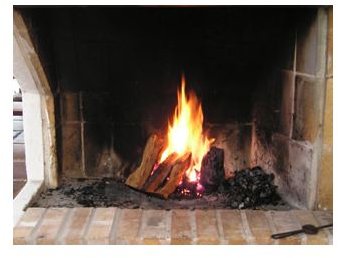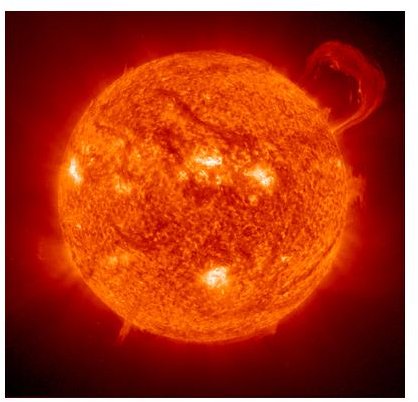What is Thermal Radiation Heat Transfer? Stefan-Boltzmann Equation
Introduction
Radiation is heat transfer via the use of electromagnetic waves. It differs from heat conduction and convection in that matter is not used to directly transfer the thermal energy. The electromagnetic waves come in various forms such as infrared light, visible light, radio waves, microwaves, x-rays, and gamma waves.
The Mechanism
The Sun is the most important source of radiation. The Sun transfers heat to the Earth without the use of another medium. Space, to recall, is nearly empty. Fire also transfers heat by this mechanism. A stove burner continues to emit heat even when the flame is turned off, and so do rocks that have been heated by the Sun. In fact, everything that is above 0 K or absolute Kelvin emits radiation, including you.
The Stefan-Boltzmann Equation

The Stefan-Boltzmann equation tells us that the rate where an object emits energy is proportional to two things: 1) the object’s temperature, and 2) the object’s area.
For a temperature T, area A, and heat Q the relation is:
- P = ΔQ/Δt = eσAT4.
Sigma is the Stefan-Boltzmann constant, and it has a value of 5.67 X 10-8 W/m2*K4.
The constant e is a number between 0 and 1, and is the emissivity. Emissivity is dependent on the material and its temperature, and it tells us how well an object emits the radiation.
Radiation and Absorption
Objects that are black or very dark absorb most of the radiation they meet, and have high emissivities of nearly 1. They are called black bodies. An ideal black body has a perfect emissivity of 1, but this is never found in real life. Black bodies are not only good emitters of radiation, but are good absorbers as well. This is why they will retain heat on hot days but rapidly become cool at night.
Shiny objects on the other hand, reflect most radiation, and absorb very little. They have low emissivities, and so are also poor emitters. An object that is at thermal equilibrium radiates and absorbs thermal energy at the same rate, and thus has a constant temperature. Dark objects and light objects can exchange heat and reach the same temperature because good absorbers are also good emitters. Otherwise, dark objects would always remain hotter than light ones.
Examples

Because everything that is above 0 K emits radiation, including living things, this is why infrared detectors are so useful to hunters and law enforcement officials. The Stefan-Boltzmann equation, with its dependence on T4, explains why radiation is very small at low temperatures. The human body and other objects near room temperature, including the Earth itself, emit infrared radiation. By contrast, the Sun and the heating elements in your toaster and light bulb, emit visible light.
Thermos bottles have shiny coatings inside that reflect the heat back and therefore help prevent heat loss. Radiation is the reason why you feel very hot if you wear black clothing on a hot sunny day, and are cooler if you wear clothes lighter in color. Some Bedouin tribes and people who dress in a similar fashion are an exception to the black clothing rule. They favor loosely fitting, porous black robes because radiation actually helps set up convection currents. These currents form breezes that continually waft through the material.
Next in the series: Some examples of heat transfer mechanisms that occur simultaneously, and experiments you can do at home.
References
Conceptual Physics by Paul Hewitt
Essential University Physics by Paul Wolfson
Fundamentals of Physics by Halliday, Resnick, and Walker
Physics for Scientists and Engineers by Douglas Giancoli
Image Credits
Sun by SolarSystem.Nasa.gov
Fireplace by Alvimann
Bedouin Sword Dance by American Colony (Jerusalem) Photo Department
Resources
Eureka! Radiation Waves Cartoon
How Bedouins Know That Black is Cool
This post is part of the series: Introduction to Heat Transfer
This is a series that describes the three methods of heat transfer. Parts one and two explain what heat transfer is, and the method of conduction. Part three discusses convection. In part four, thermal radiation is described.
